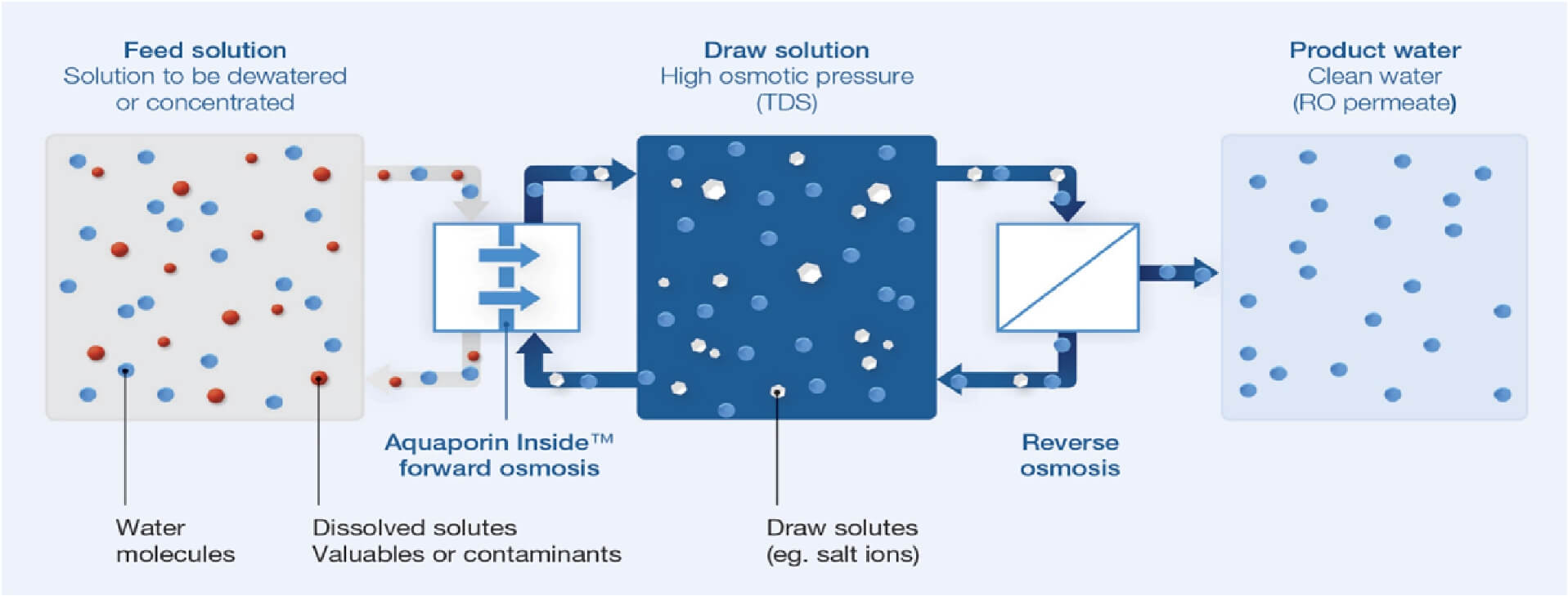Forward Osmosis
Forward Osmosis is a gentle process that transports water across a semi-permeable FO membrane from lower concentration to higher concentration side while effectively retaining any dissolved solutes in the wastewater. The driving force is the osmotic pressure difference between a solution of higher concentration (draw solution) and a solution of lower concentration (feed solution).

Forward Osmosis can be effectively used for the reduction of wastewater volume before the thermal evaporation process as well as for optimizing OPEX
Applications:
- Pre-concentration of wastewater before evaporation
- A cheaper and more sustainable path towards achieving ZLD
- Pre-concentration of valuable streams before extraction in food as well as product recovery sectors
- Extraction of process water while simultaneously reducing wastewater volume
Advantages:
- Low Operating cost. As the volume of wastewater going to Thermal Evaporators is reduced, the overall CAPEX/OPEX cost of evaporators reduces drastically
- Better rejection of solutes
- Very high tolerance to contaminants (COD/TAN/TDS)
Difference between FO and RO
| FO | RO | |
| Operating Pressure | Low (irrespective of TDS) | High (depending on TDS) |
| Fouling | FO membranes are of low fouling nature and easily recoverable | Organic fouling is a major issue for RO membranes |
| COD Tolerance | COD < 100,000 ppm
|
COD < 100 ppm |
| TDS | FO reject side concentration up to 200,000 ppm | RO reject concentration up to 80,000 ppm |
| Pre-treatment | Micron filters of suitable rating are sufficient | Ultrafiltration (UF) is recommended |
| OPEX | Significantly low OPEX thereby reducing the payback period | High OPEX |
